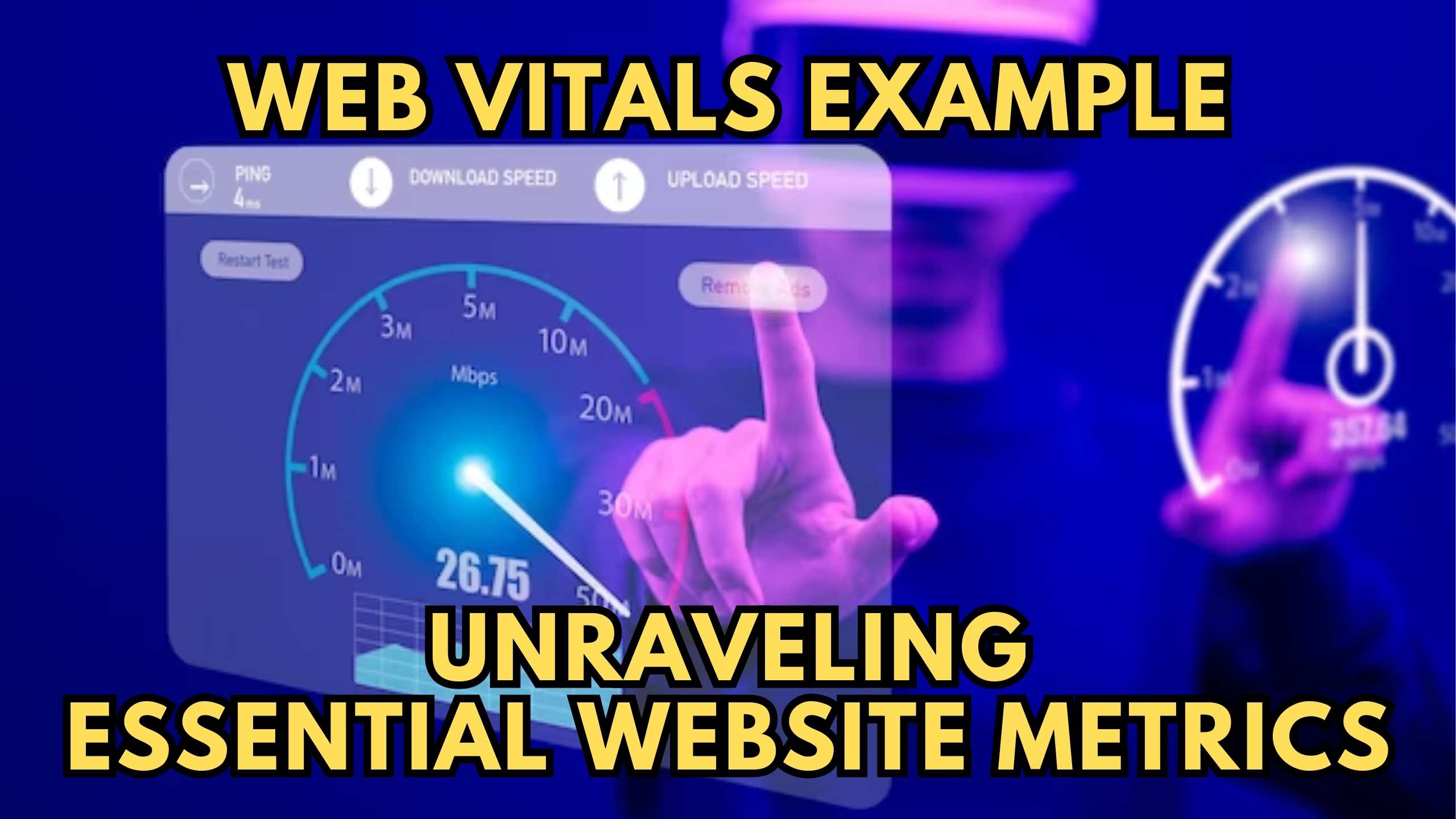Web Vitals Example: Unraveling Essential Website Metrics


Web Vitals Example: Unraveling Essential Website Metrics
In the digital landscape, website performance is critical for user satisfaction and search engine ranking. Google’s Web Vitals have emerged as key metrics to measure and optimize a website’s user experience. In this blog, we will delve into Web Vitals, exploring their significance, understanding each metric, and uncovering the importance of monitoring and improving these aspects for a seamless online experience.
1. Understanding Web Vitals
Web Vitals are a set of metrics introduced by Google to measure and quantify the user experience on the web. These metrics encompass various aspects such as loading performance, interactivity, and visual stability. Imagine Web Vitals as the health checkup for your website, providing insights into its overall performance.
2. Core Web Vitals: Largest Contentful Paint (LCP)
LCP measures the time it takes for the main content of a web page to load fully. It is a crucial metric, as it directly correlates with the perceived loading speed by users. Consider a scenario where a potential customer visits your e-commerce site. A fast-loading LCP ensures that they quickly view the products, enhancing the chances of conversion.
3. Core Web Vitals: First Input Delay (FID)
FID measures the time it takes for a user to interact with your website, such as clicking a button or a link, after the initial page load. This metric gauges the responsiveness of your site. For example, a blog with quick and responsive links ensures an engaging reading experience, preventing frustration from delayed interactions.
4. Core Web Vitals: Cumulative Layout Shift (CLS)
CLS quantifies the visual stability of a webpage by measuring unexpected layout shifts during its loading phase. Think of a news website where images and ads dynamically load. A low CLS ensures that these elements don’t unexpectedly shift, providing a stable and comfortable reading experience.
5. Importance of Monitoring and Improving Web Vitals
Monitoring and improving Web Vitals is crucial for several reasons. Google considers these metrics in its search ranking algorithm, impacting your website’s visibility. Moreover, a positive user experience leads to higher retention rates and increased user satisfaction, contributing to the success of your online presence.
Relevant SaaS Products for Web Vitals Optimization
As you strive to enhance your website’s performance, consider leveraging the following SaaS products:
- Google PageSpeed Insights: Gain actionable insights into your website’s performance and receive suggestions for improvement.
- GTmetrix: Analyze your website’s speed and receive recommendations to optimize loading times.
- Pingdom: Monitor your website’s uptime and performance, ensuring it remains accessible and responsive.
- Cloudflare: Utilize a content delivery network (CDN) to optimize the delivery of your website’s assets, improving overall performance.
Conclusion
In the competitive online landscape, understanding and optimizing Web Vitals are crucial for the success of your website. Monitoring metrics like LCP, FID, and CLS not only improves search engine rankings but also enhances user satisfaction, leading to higher engagement and conversions.
Optimize Your Website with Subscribed.fyi!
Ready to elevate your website’s performance? Subscribed.fyi offers an all-in-one solution for managing your SaaS stack. Sign up for free today at Subscribed.fyi and unlock exclusive deals on tools that can help you optimize your website’s Web Vitals, ensuring a seamless and engaging user experience.
Relevant Links:





